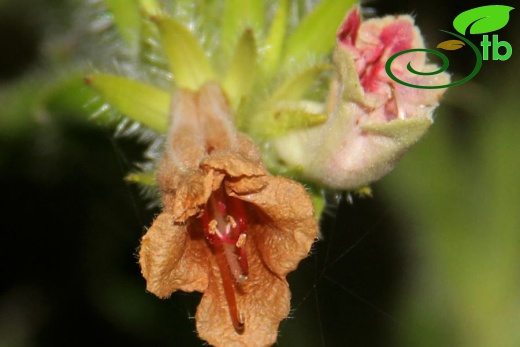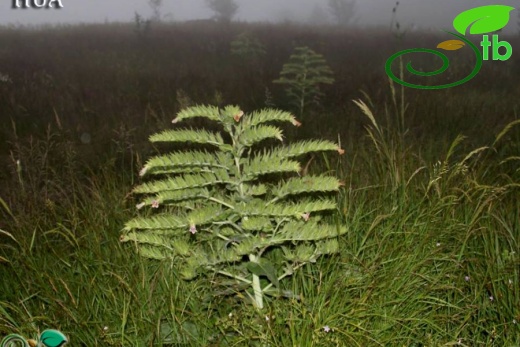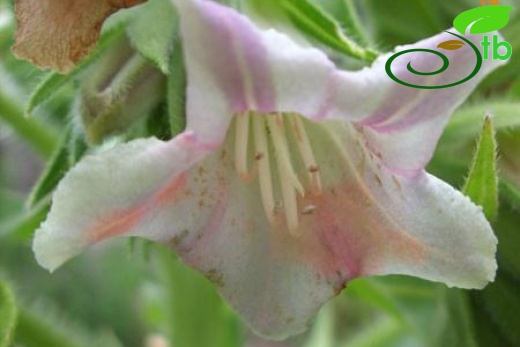Echium orientale
Echium orientale
Akşamşavkı
Stout prickly biennial. Stem simple, 30-100 cm, glaucous, glabrous below, densely patent-setose above. Leaves robust, acute, densely tomentose with subadpressed, setiform hairs above, velutinous beneath; basal to 40 x 10 cm, narrowly elliptic to oblanceolate, shortly petiolate; cauline narrowly ovate to lanceolate, to 15 x 4·5 cm, sessile, cordate-amplexicaul. Inflorescence very large; much-branched, cymes arching outwards in fruit. Calyx 20-25 mm in flower, accrescent to 45 mm in fruit. Corolla dirty-white to pale lilac, the two upper lobes and contiguous tube each with two deeper purplish to brownish stripes separated by a white line, to 40 mm, puberulous outside, throat oblique. Anthers all included. Style very shortly bifid to bilobed. Nutlets ovoid-subglobose, narrowly beaked, 7·5 x 6 mm, faintly rugose-striate. Fl. 6-7. Cleariances of Fagus and Abies forest, etc., 850-1550 m.
Endemic. Euxine element. No close relatives in the genus; differs from all other Echium species by its almost smooth, very large, chick-pea-shaped nutlets, and is further remarkable for its large, broadly infundibular corolla, with paired ± vinous stripes.





